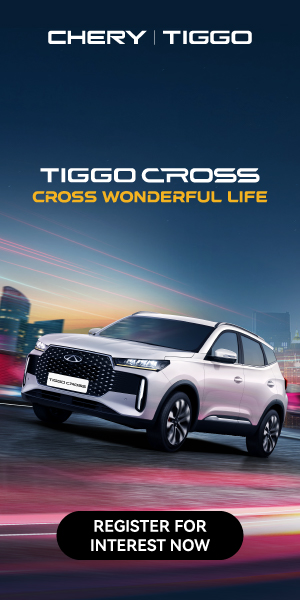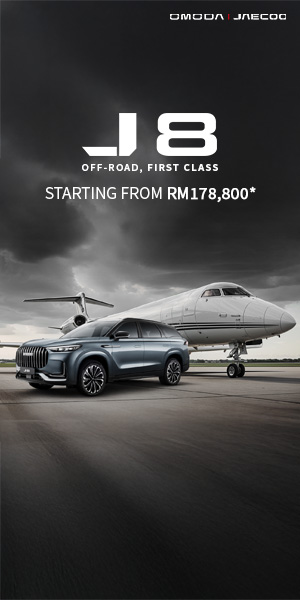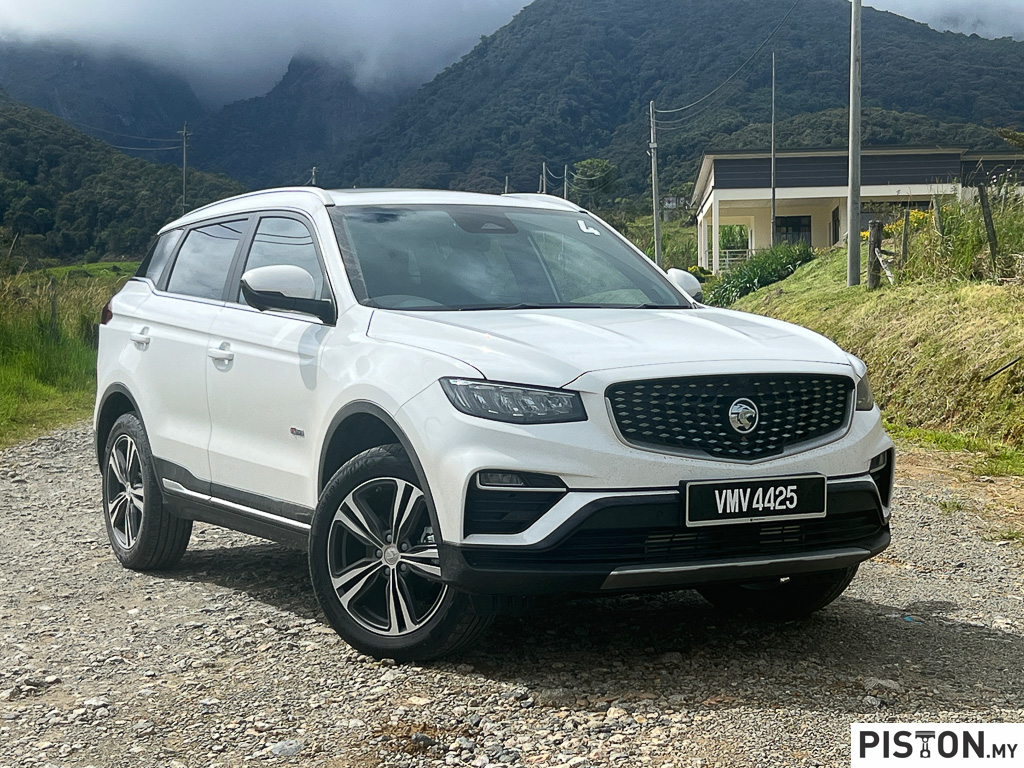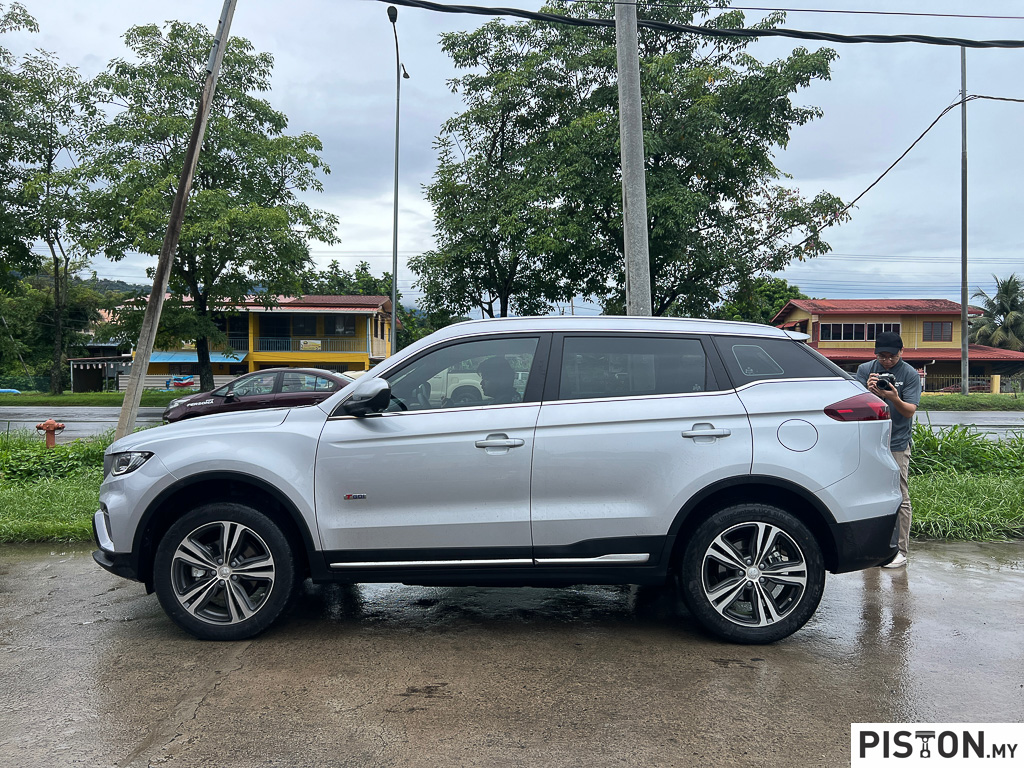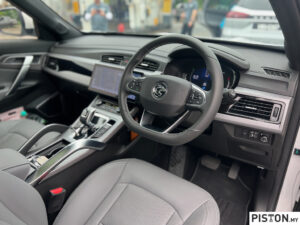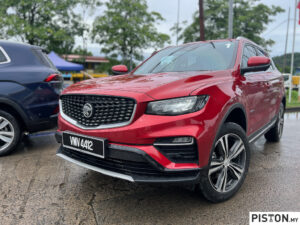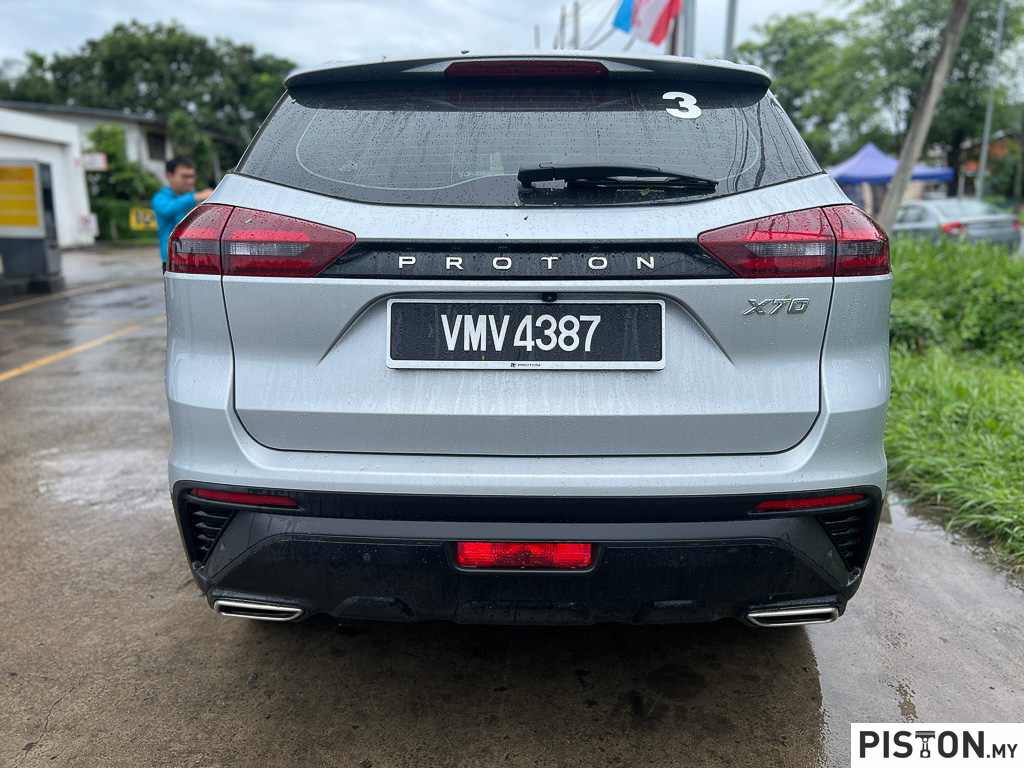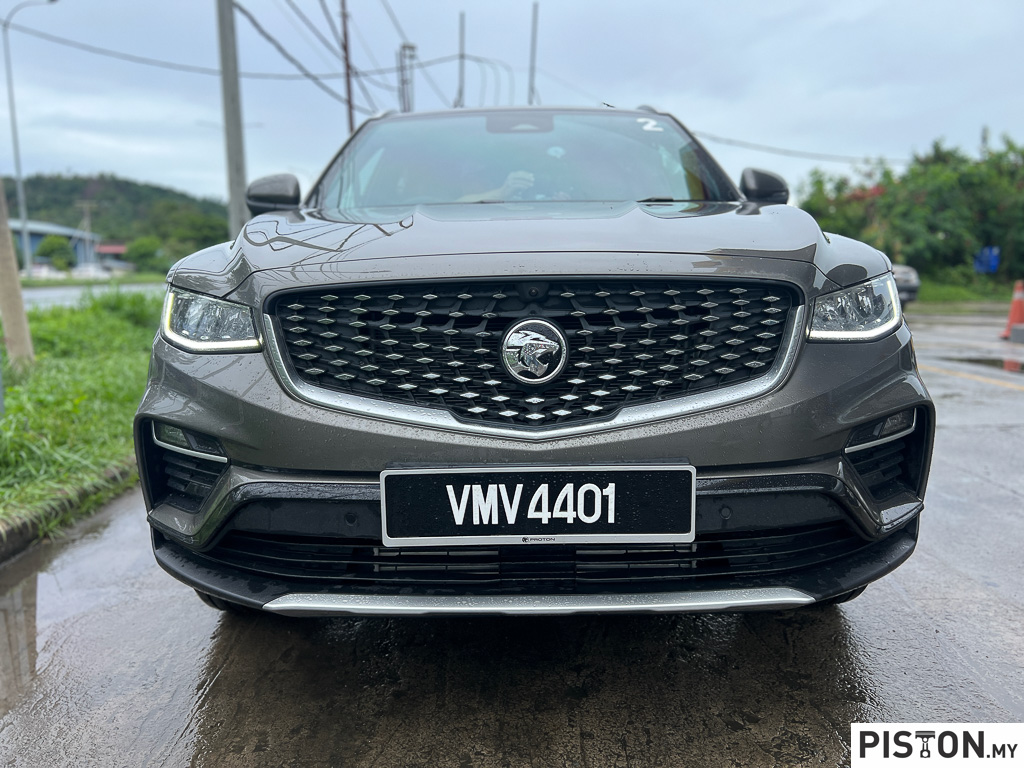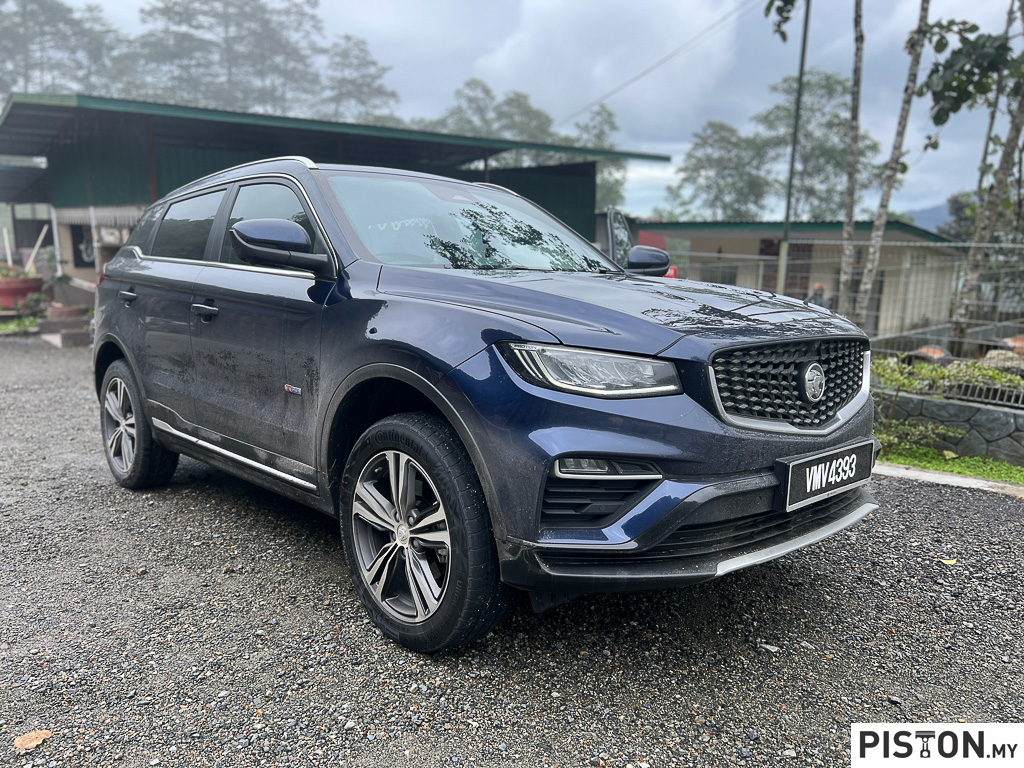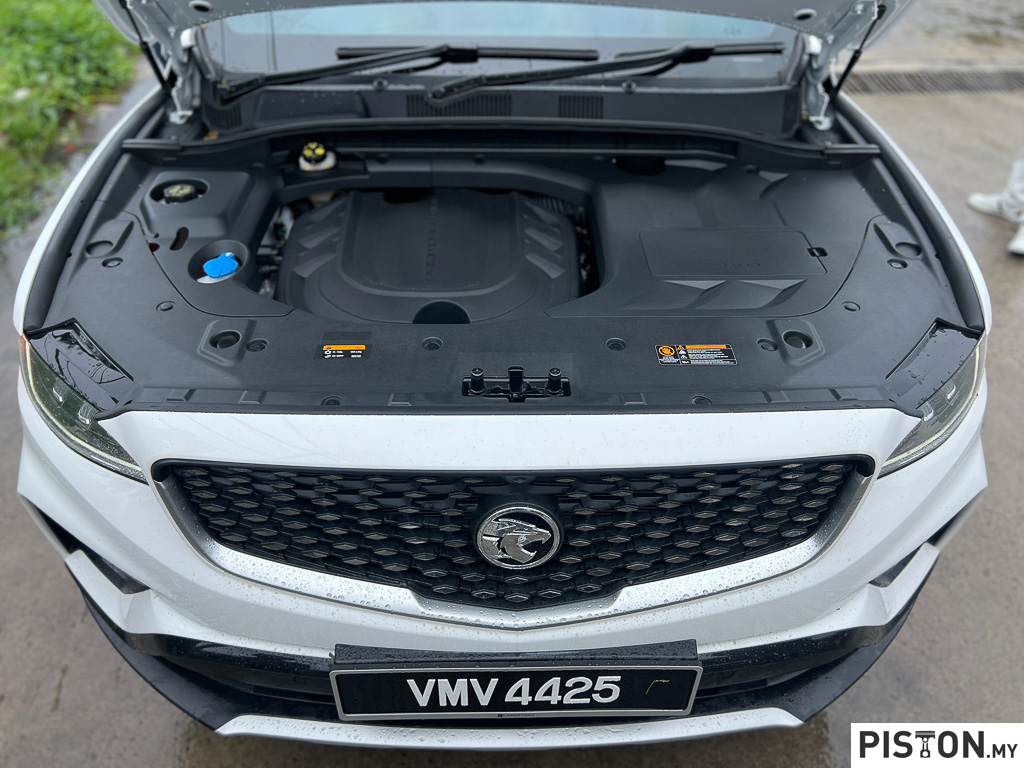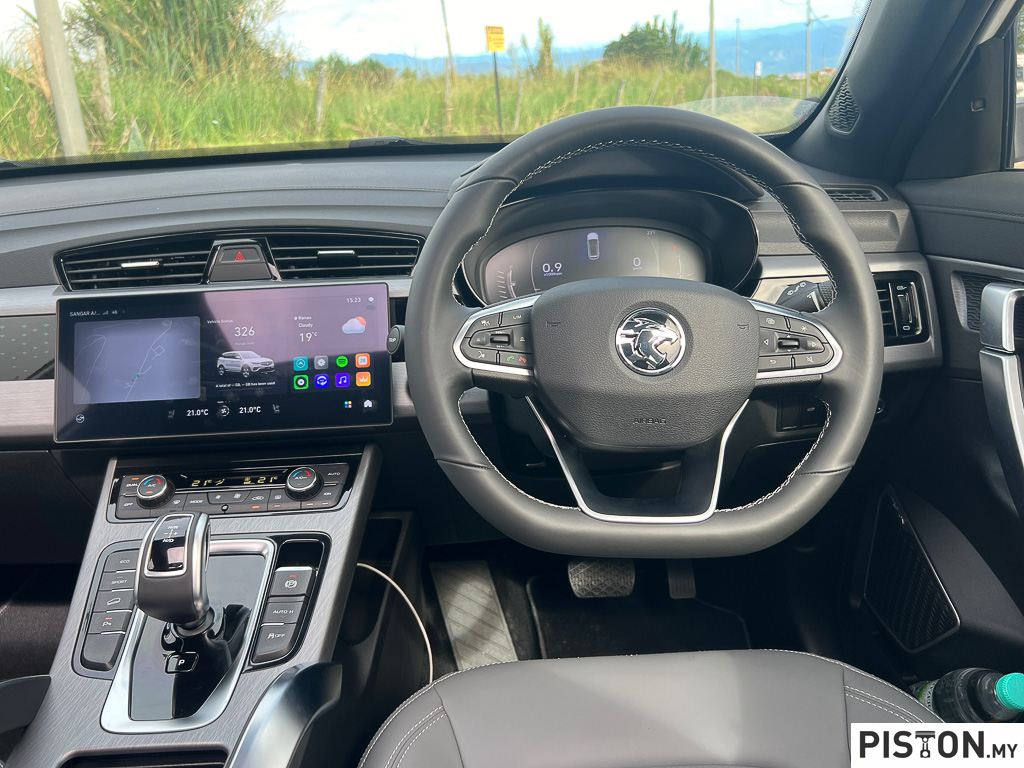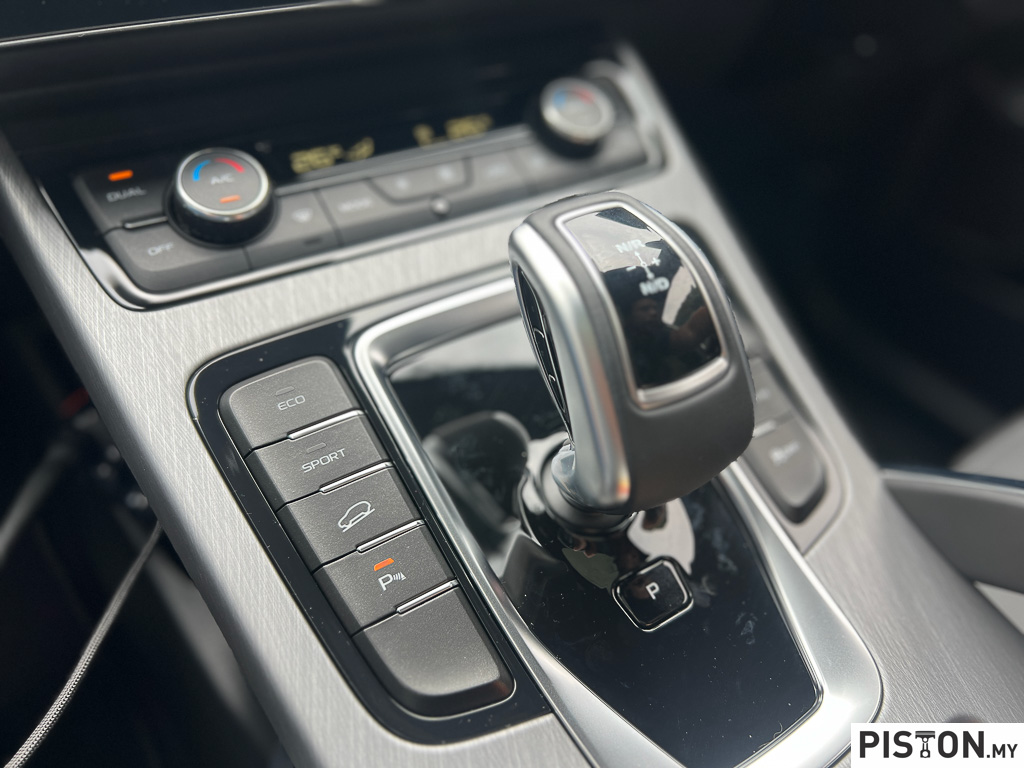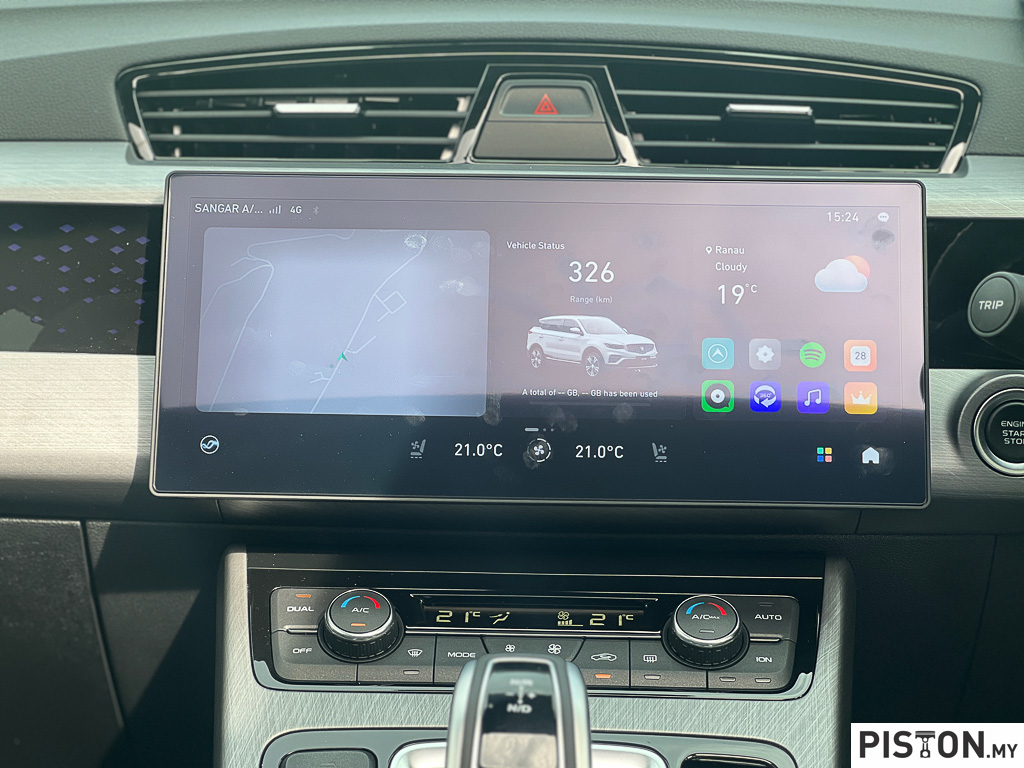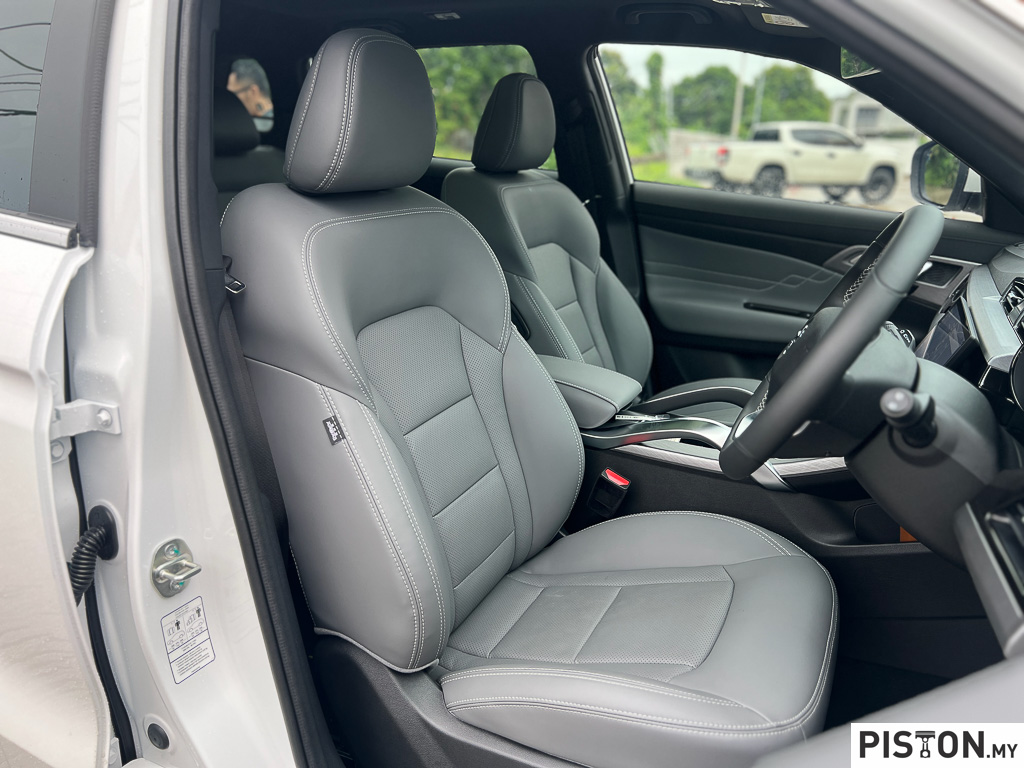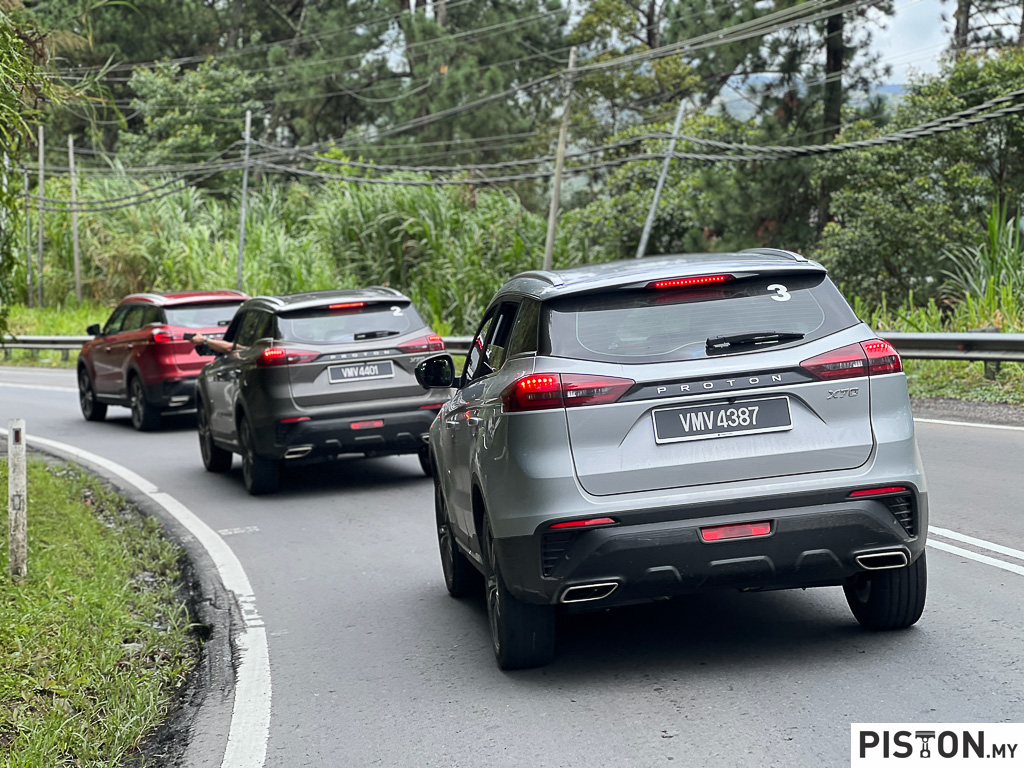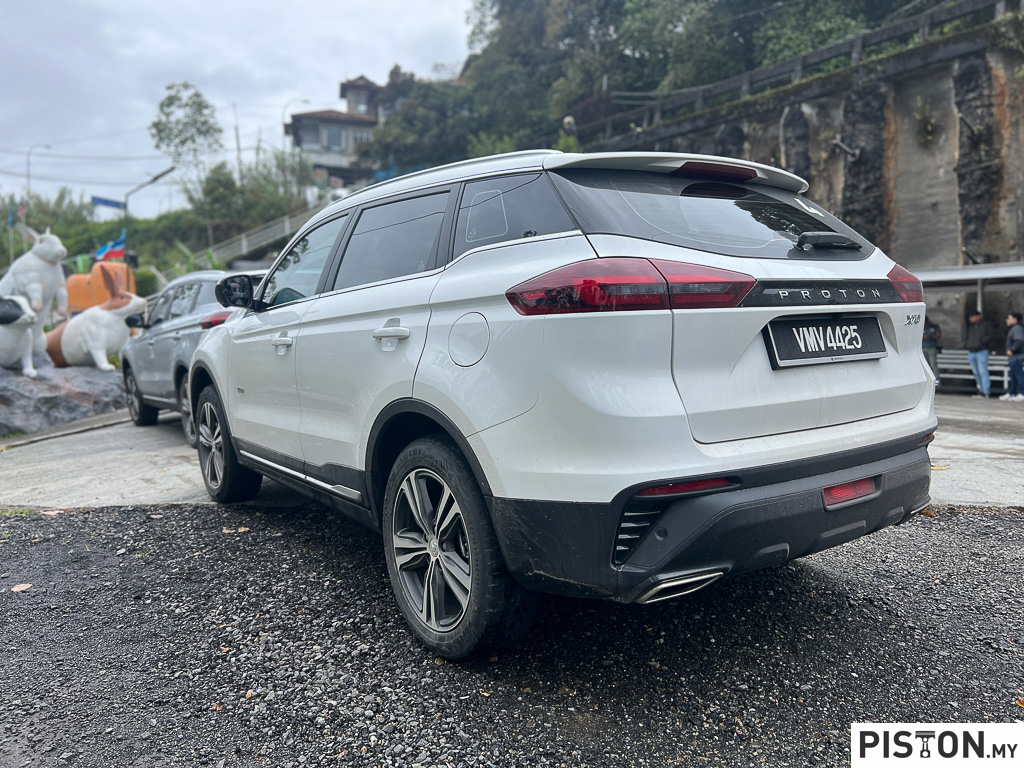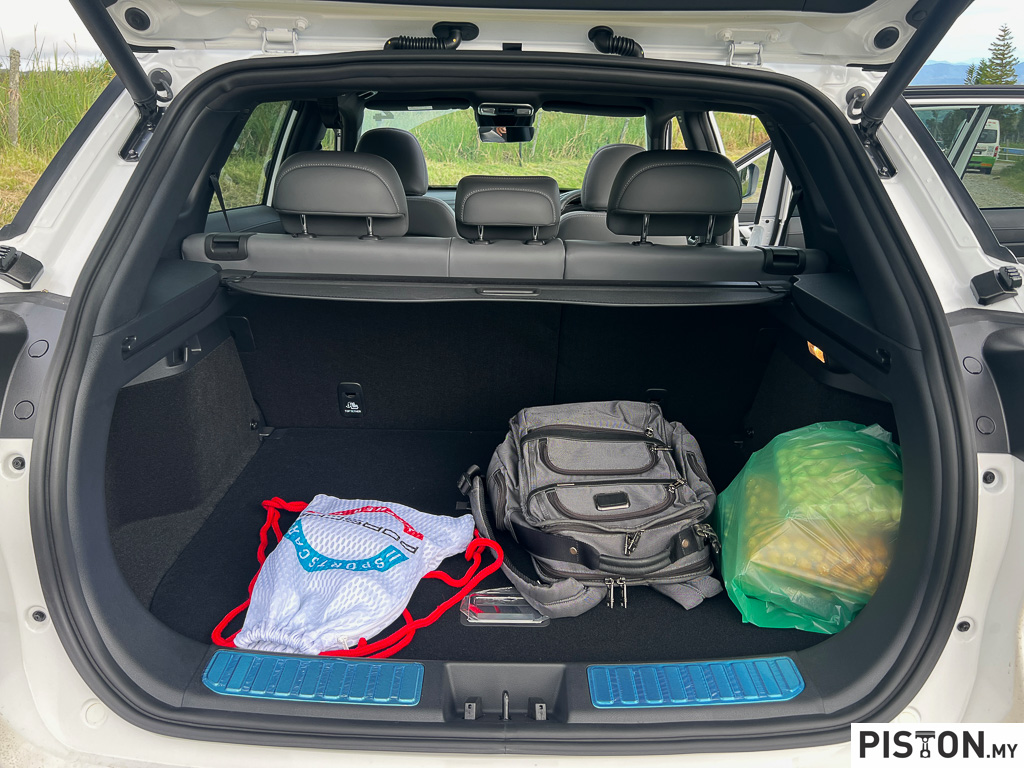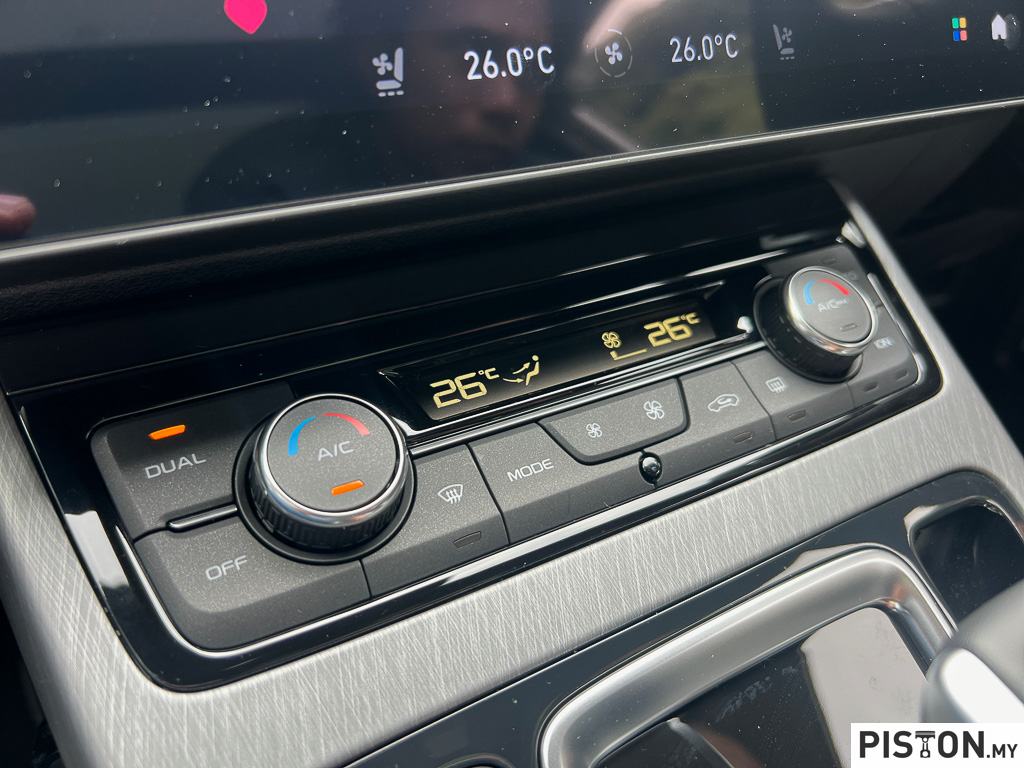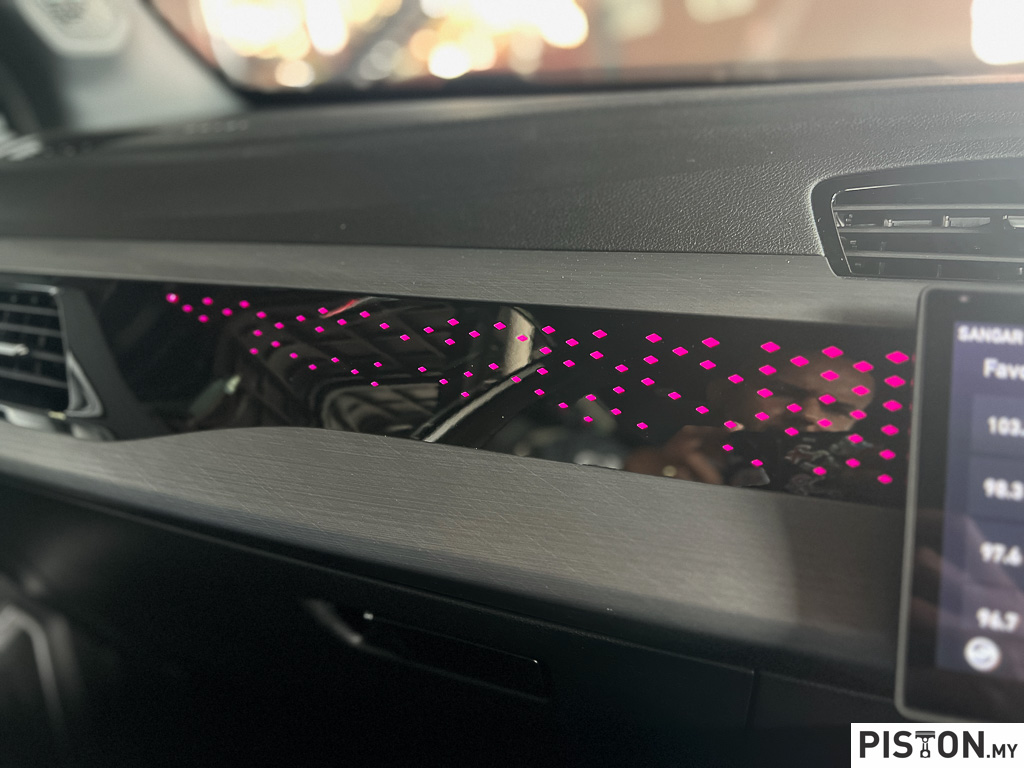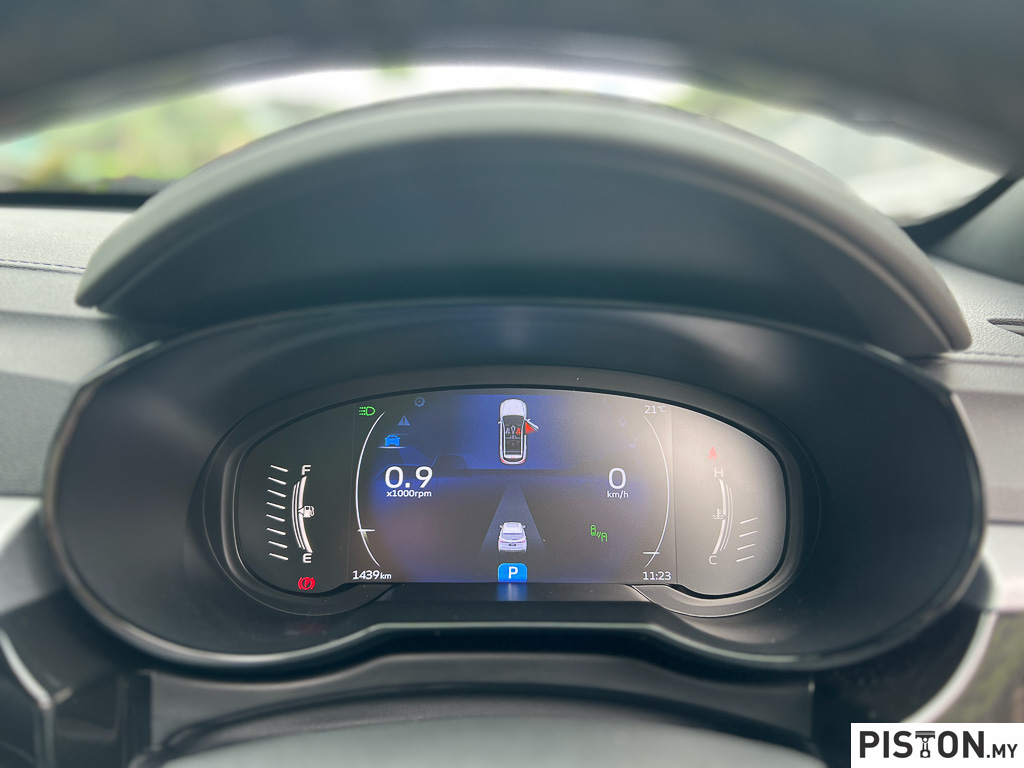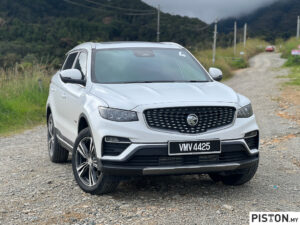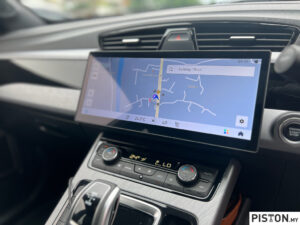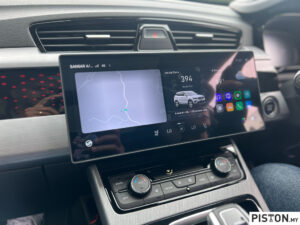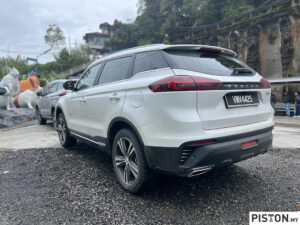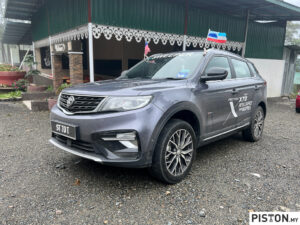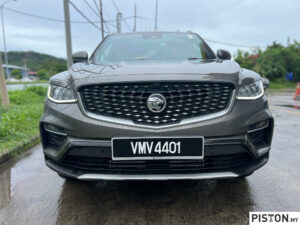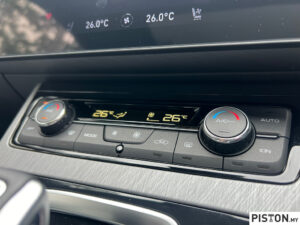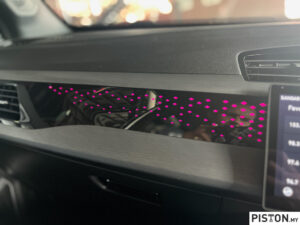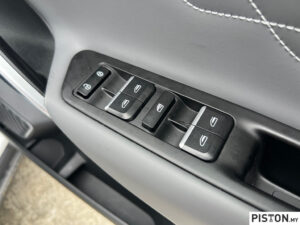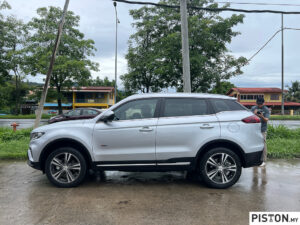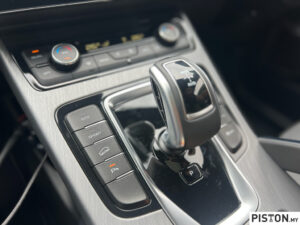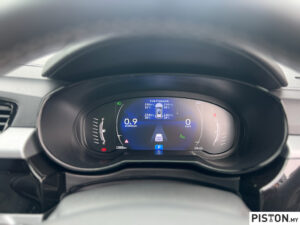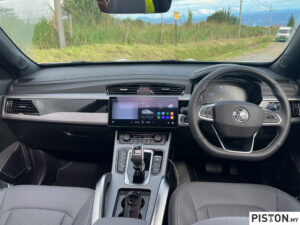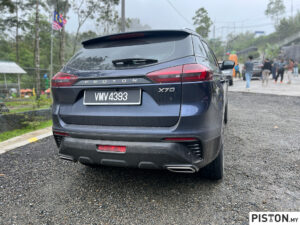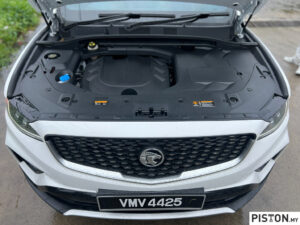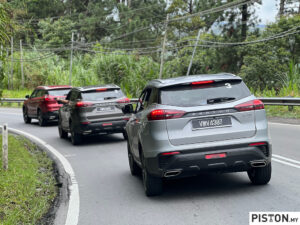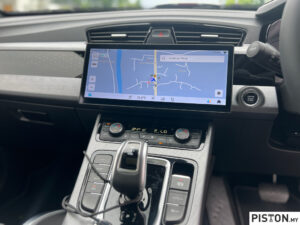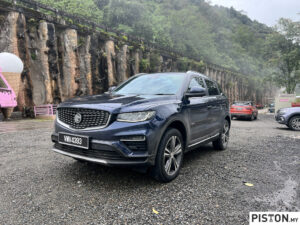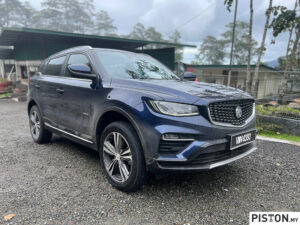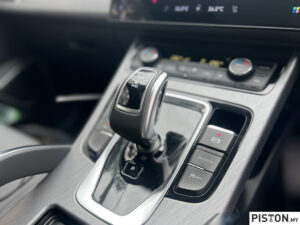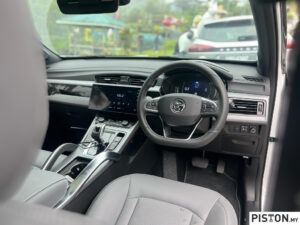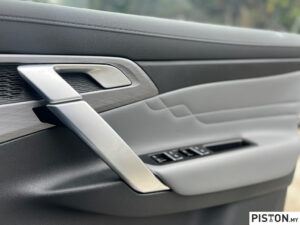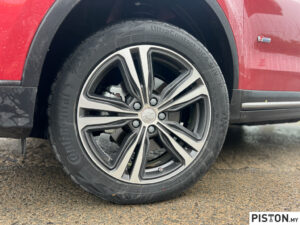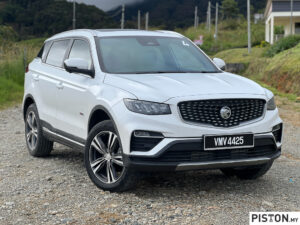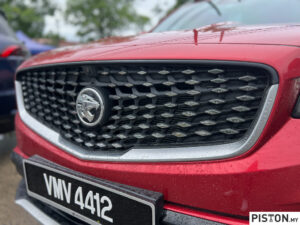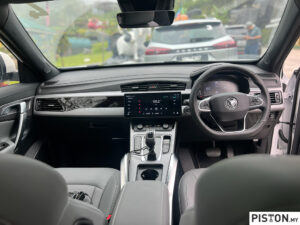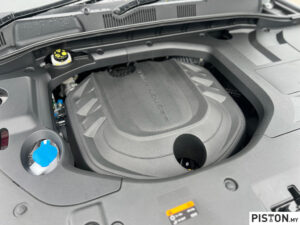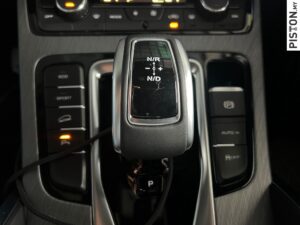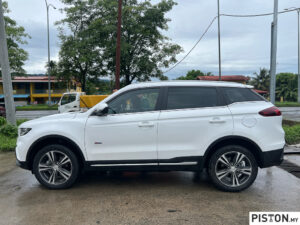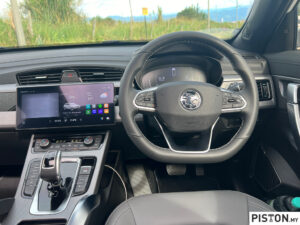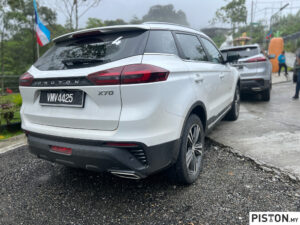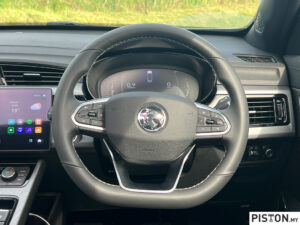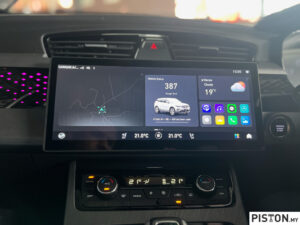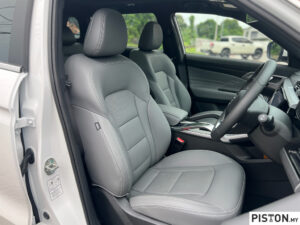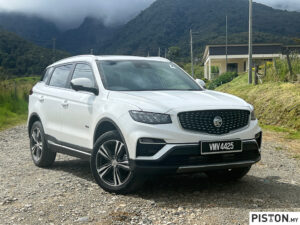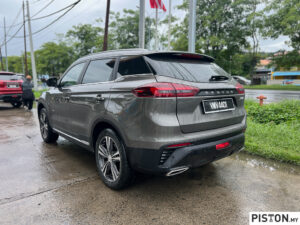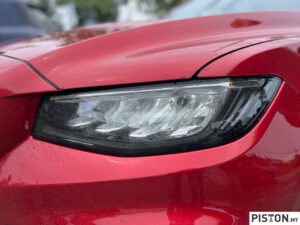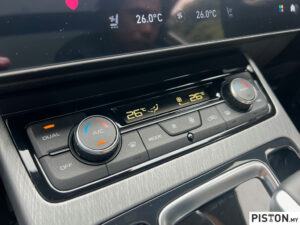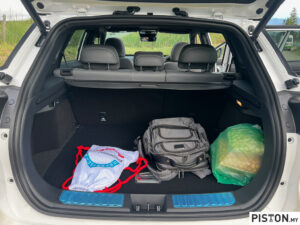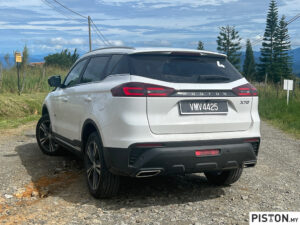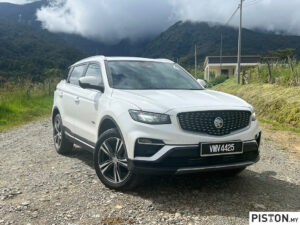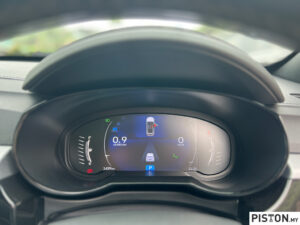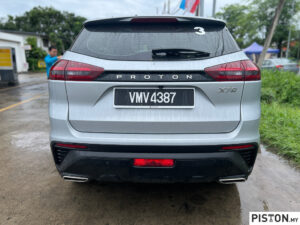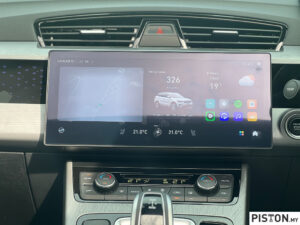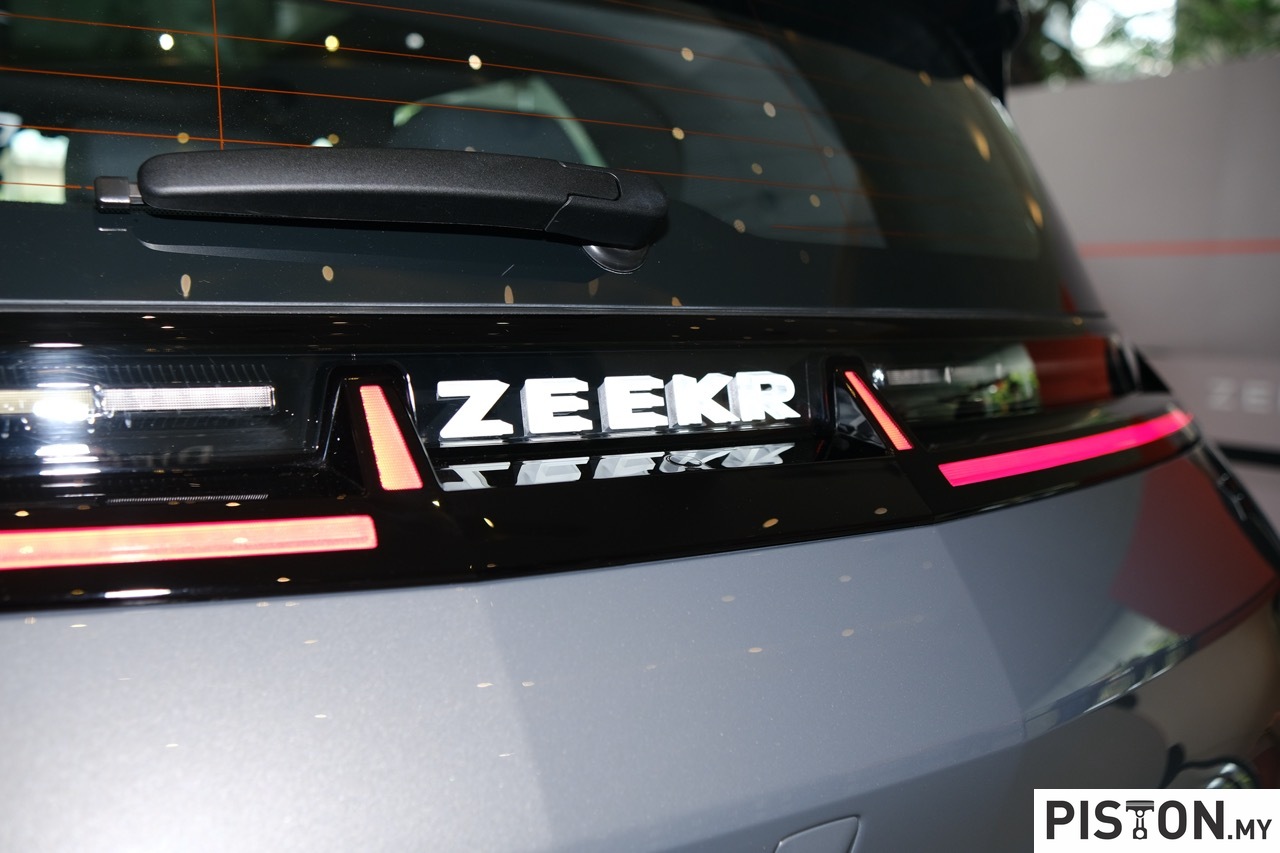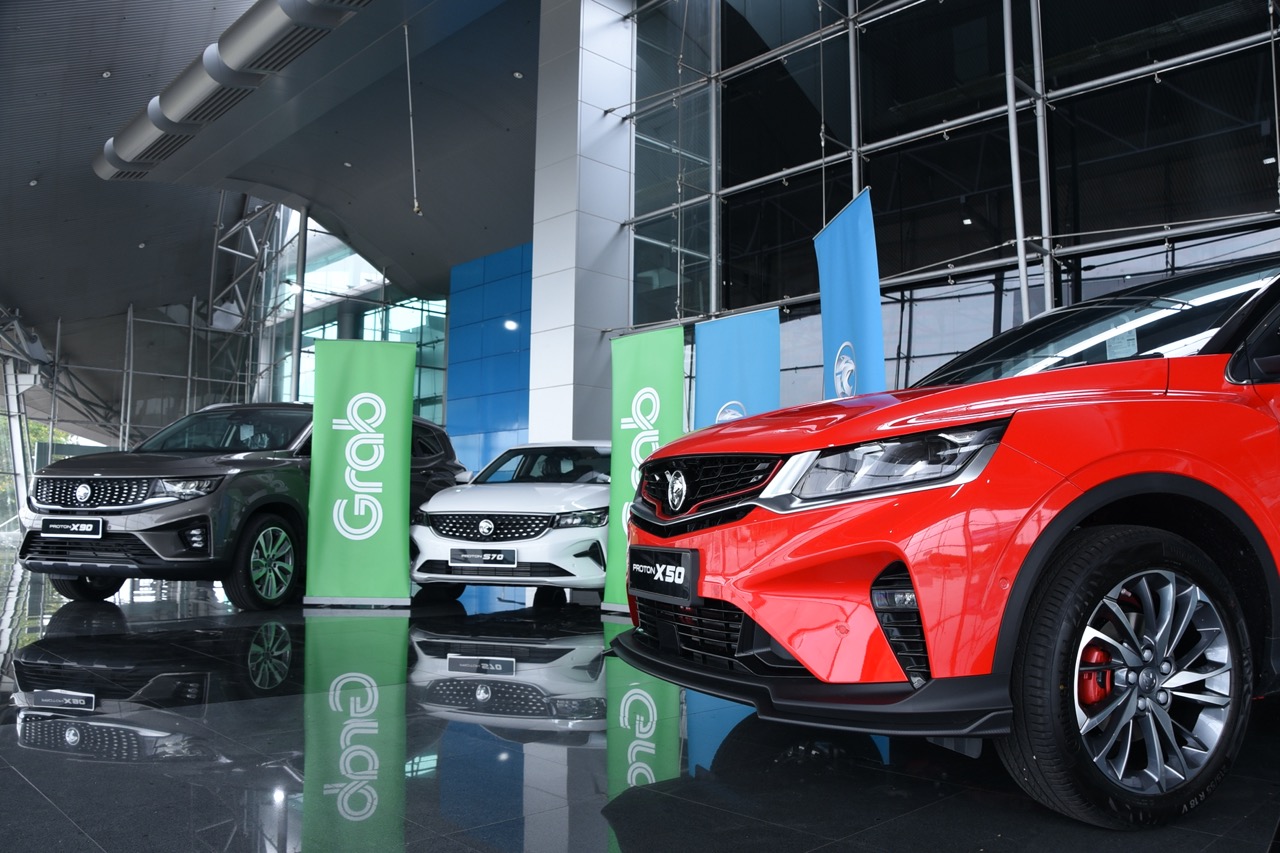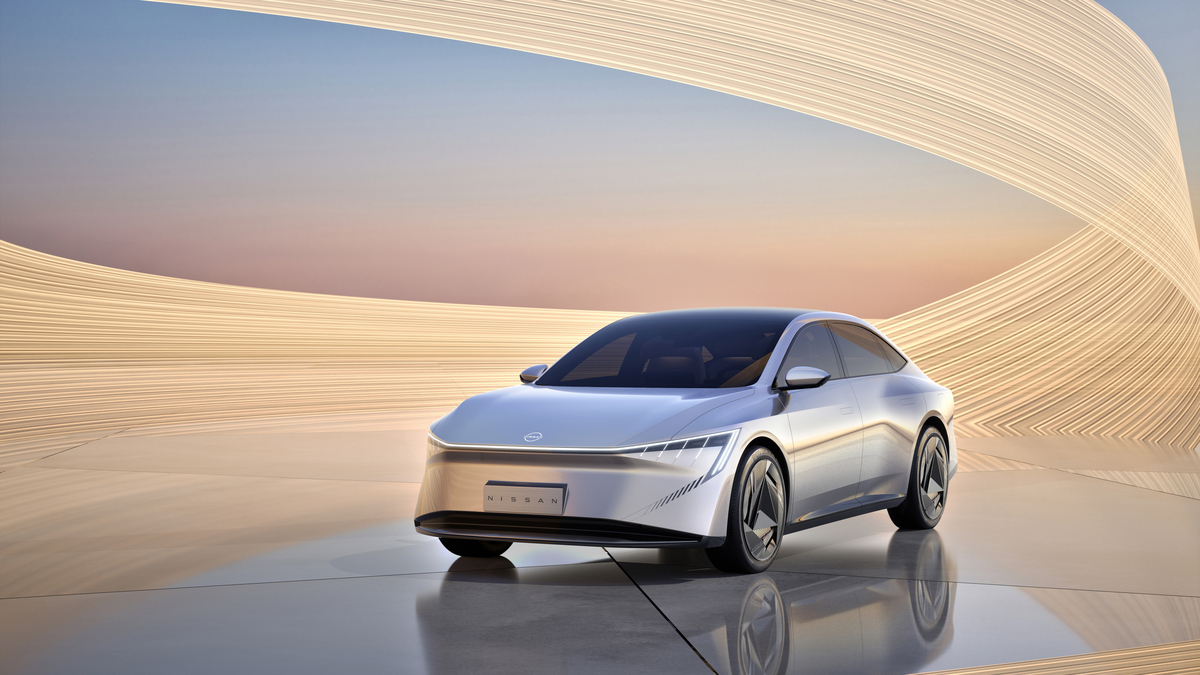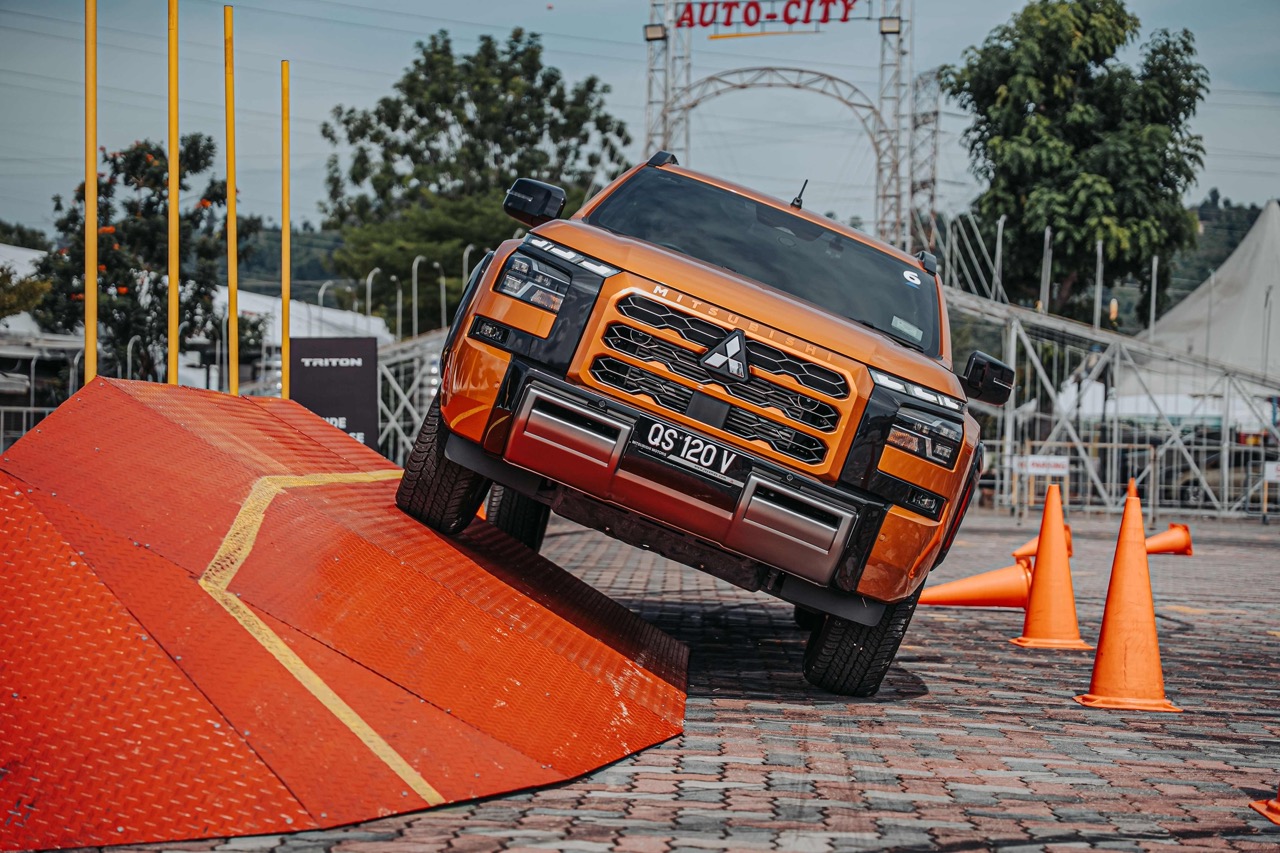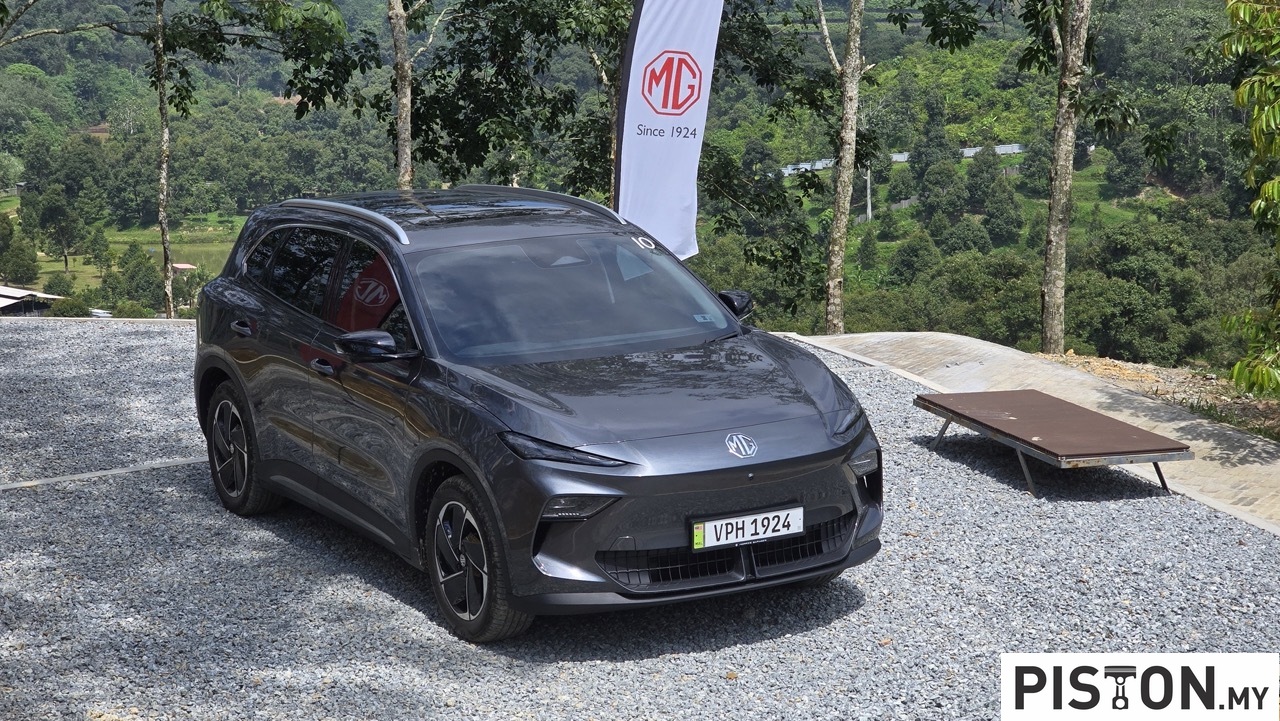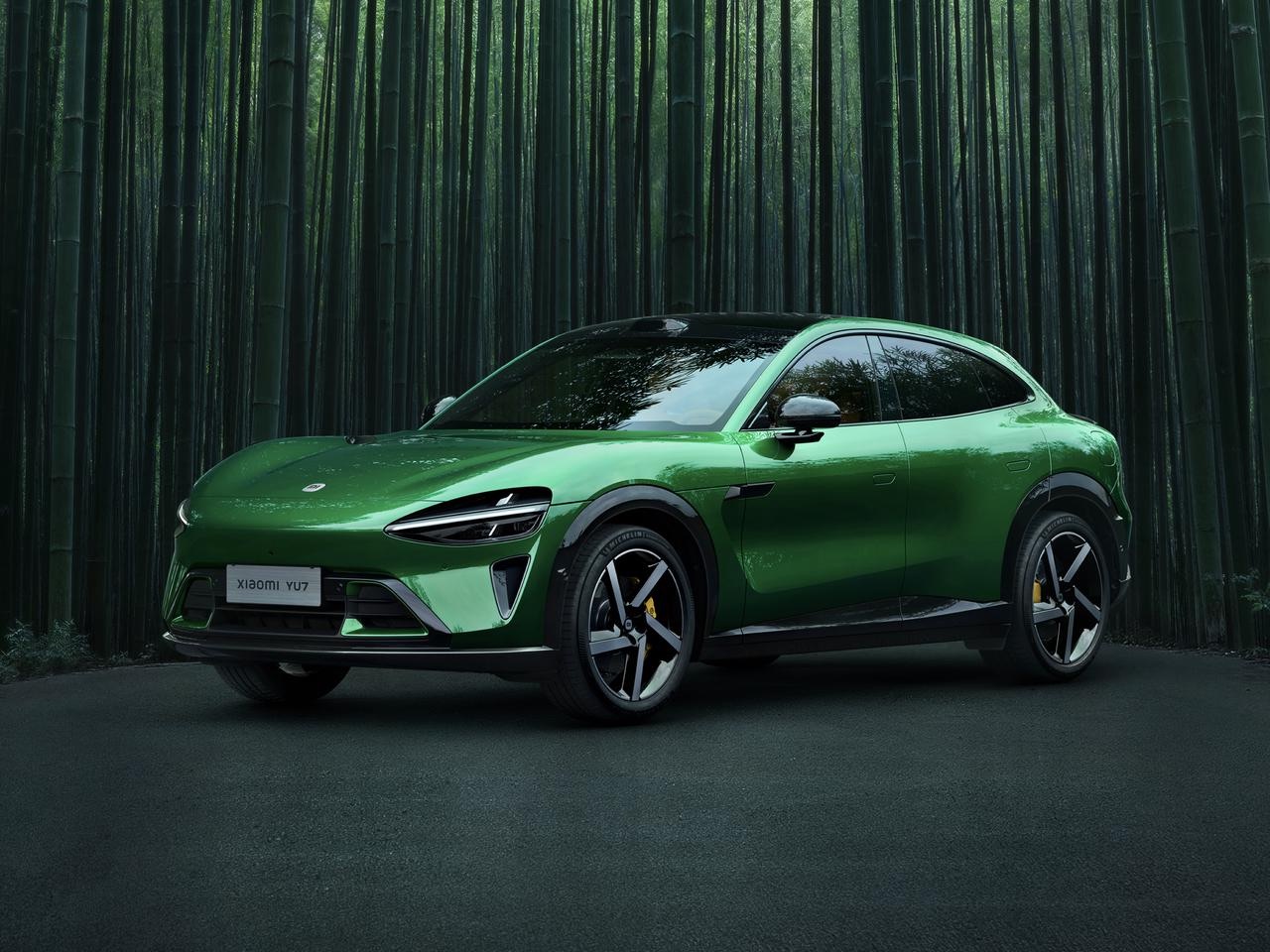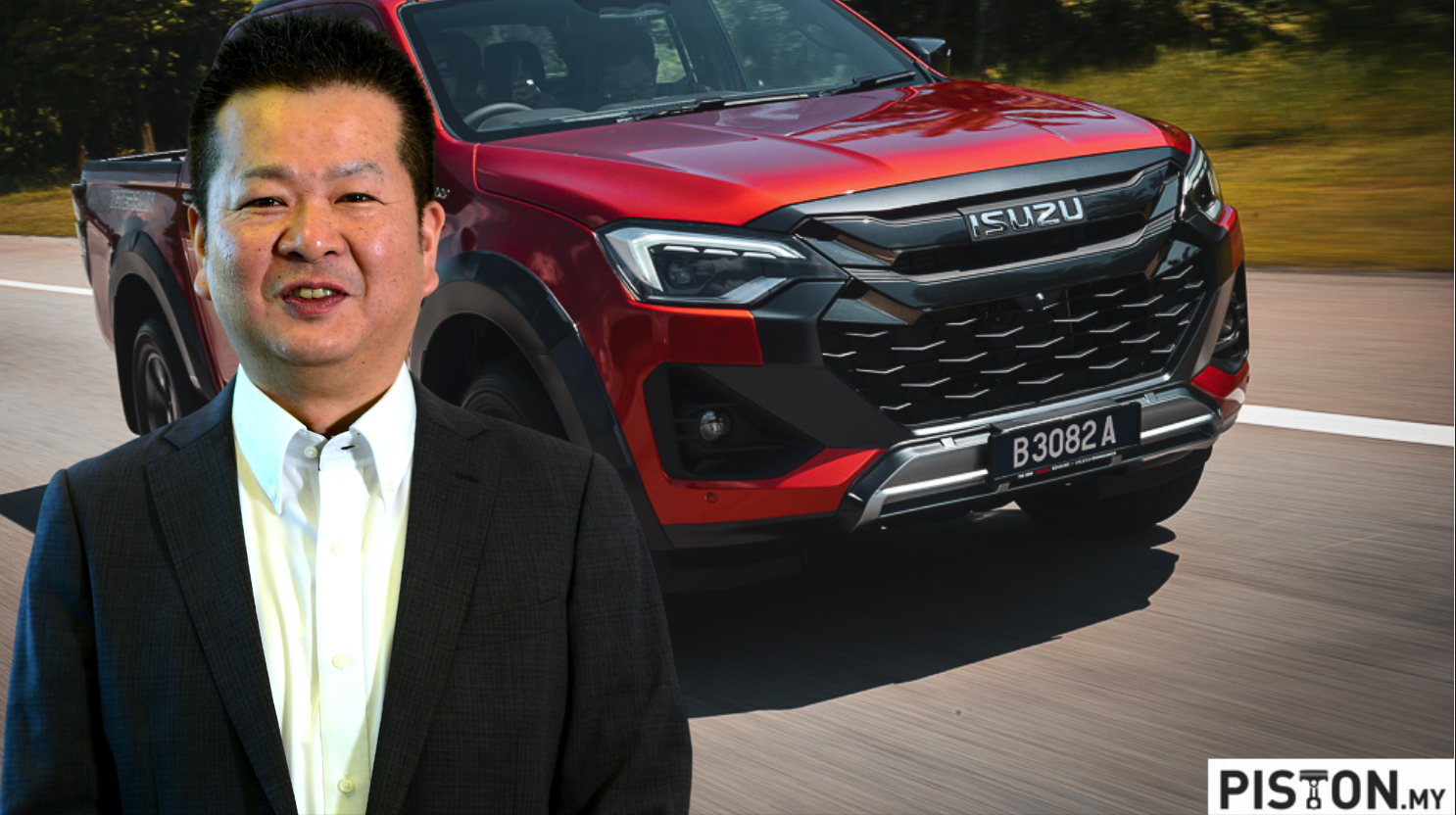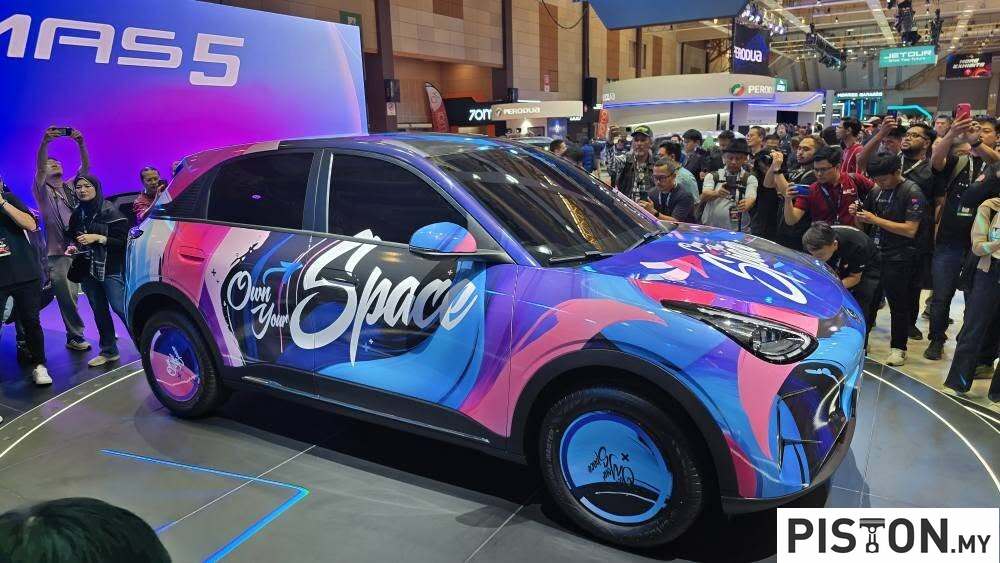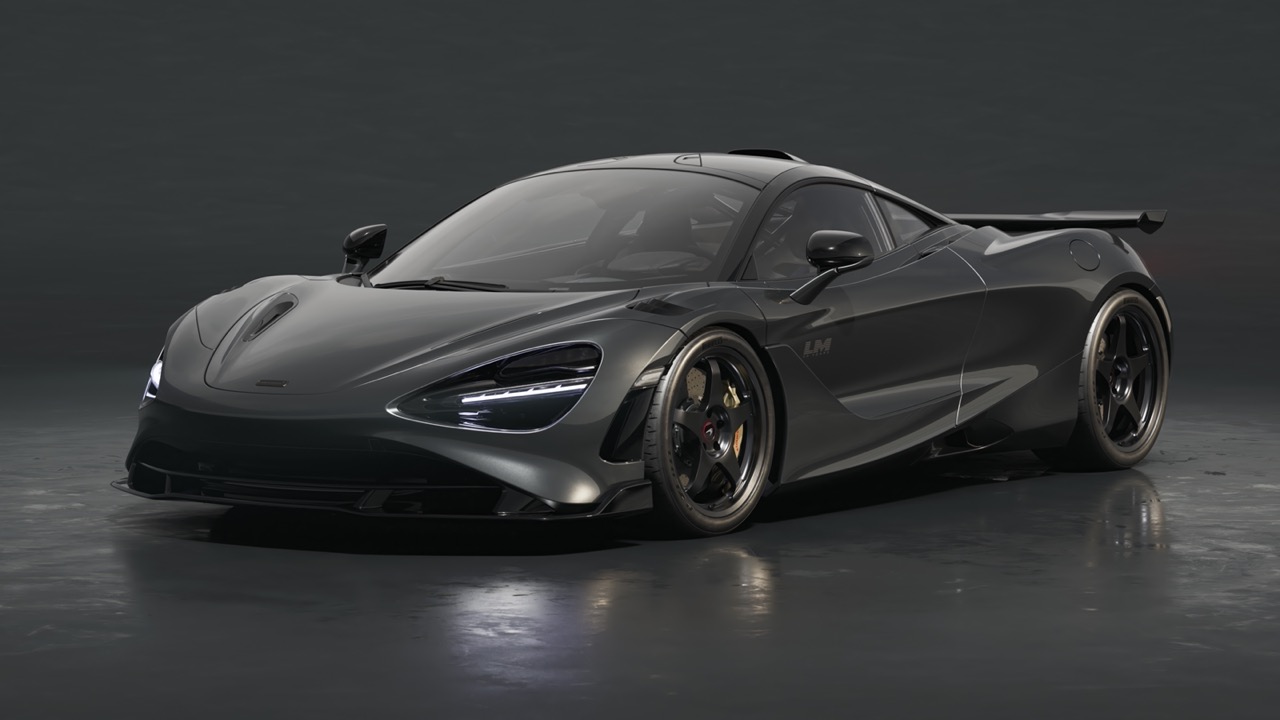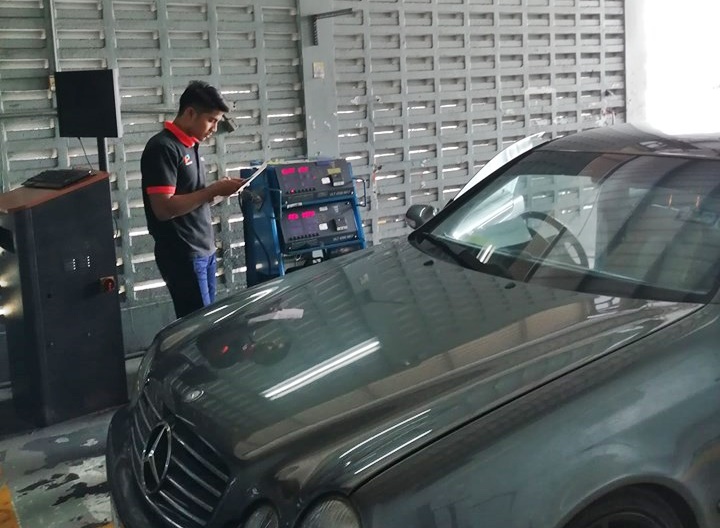The Proton X70 has been a sales story of epic proportions ever since it was introduced back in 2018. Featuring technologies that others could only dream about back then, the X70 was accepted with arms wide open by Malaysians, and thus demolished the Malaysian automotive c-segment.
Since then, the Proton X70 has been made available in 11 countries with over 100,000 units sold, making it the most popular premium SUV in its category.
In fact, the X70’s donor car, the Geely Boyue is a success story by itself, with over 1.8 million units sold in 49 global markets.
But to relegate the X70 as a mere rebadge would be to disparage Proton of the credit that it deserves. There is no denying that Proton played a huge role in making the X70 a great car. Every department in the company, from the engineering folks to the marketing maestros played a part in ensuring the X70 would be well accepted.
In fact, the X70 is not a mere rebadge of the Boyue. Proton’s engineers spent countless hours on localising the car to ensure that it could deal with Malaysian roads and harsh tropical climate.
For example, the latest facelifted Proton X70 may have taken some time to be introduced. But Proton spent 290,000 manhours testing the new car over 4.2 million kilometres, akin to travelling to the moon and back an astonishing 11 times.
Building a car for Malaysians is no easy feat, and re-engineering a car that was built for left hand drive markets, and then ensuring that it meets local demands is another challenge altogether.
While the previous generation X70 was well accepted because of its spaciousness, technology and strong pricing, the new model builds on all of that and packages it all in a new, better-looking body design. To top it off, there’s a sprinkle of new tech to keep it fresh as well.
Design wise, you may be hard done telling old and new apart from the back of the car since the only update is the design of the bumper, but the front has been updated with a new grille, bonnet and fender. There are also new headlights with 47 pieces of LED’s for added clarity, and a new, redesigned bumper as well.
The side profile of the car remains the same though, but there are new rims and the flagship model, the Premium X, which is the topic of this story, rolls on 19-inch wheels.
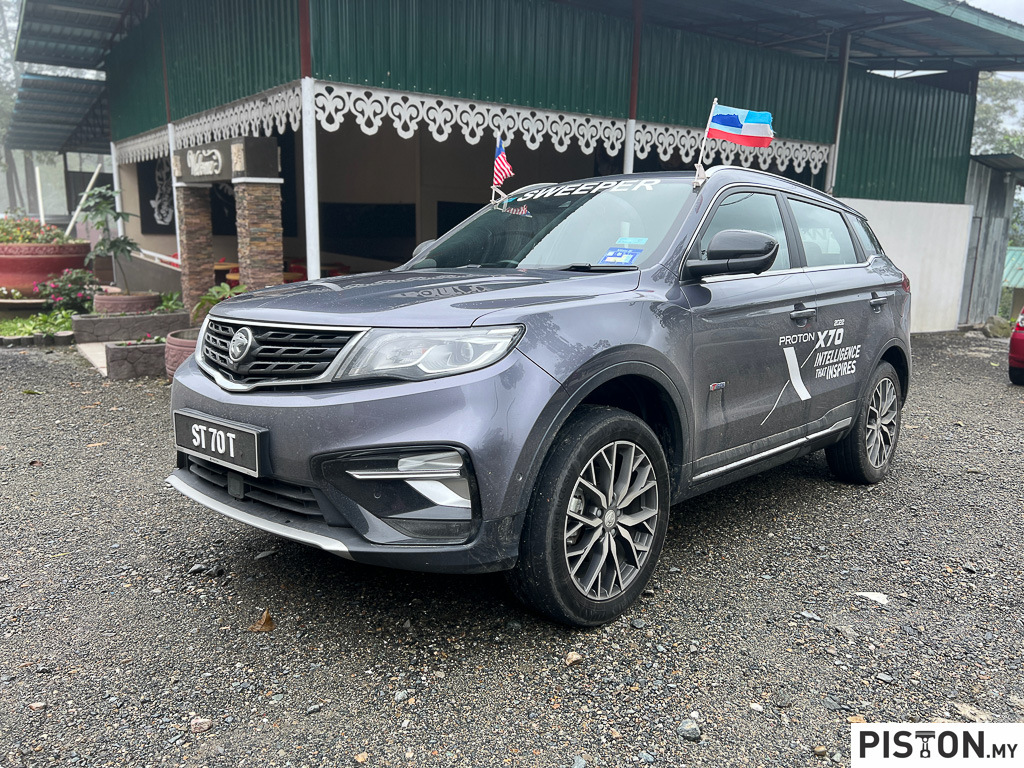
As you can probably already tell by now, most of the updates for the new X70 lays underneath the metal.
The engine for example is only available in a single-variant now. While previously you could opt for a 1.8-litre, four-cylinder, turbocharged engine, now you only have one choice – a 1.5-litre, three-cylinder, turbocharged engine. Yes, it is the same engine found in the X50, but with a different state of tune.
A major focal point for Proton’s engineers was to ensure the engine had been properly refined and retuned to make it run more efficiently. And because the engine is lighter than the older four-cylinder unit, Proton says that this will improve the way the car feels as well. Lower weight always equates to better performance and efficiency, it is the most basic law of automotive engineering.
On the efficiency part, Proton’s engineers also worked to improve combustion to maximise fuel usage which makes the engine run cleaner. Friction was another area the engineers focused on because the lower the friction, the lower the resistance and the lesser fuel the engine needs.
But that’s not all though. The new seven-speed dual-clutch transmission has been recalibrated particularly from the third to the sixth gear ratios. Lowering the engine rpm across these ratios also reduces fuel consumption.
The software has also reworked and the result of this is the engine management system, and the transmission control unit now speak the same language. So, because the flow of data between the two is more fluid, they better understand each other’s demands and hence lower fuel usage, avoiding any unnecessary downshifts.
With all this talk about efficiency, you may be wondering if Proton paid any attention to improving performance. Well, with 177PS from 5500rpm and 255Nm of torque from just 1500rpm, the updated X70 boasts one of the highest power outputs in its segment. All this while efficiency has been improved by a full 4%.
This may not seem like much, but based on our calculations, the new X70 now has a theoretical range of 822km on a full tank, while the old model had 790km. No one or very few people drive their cars till their tank is empty, but it is comforting knowing that if you are ever left with no petrol station in sight, you could go further in a new X70 than you could in the old one.
The other area that has received a major update is the interior. Step inside and into the driver’s seat and the first thing that will catch your eye is the new digital instrument cluster. It now offers new visuals, is clearer and just much easier to read when driving.
Then there is the new floating infotainment screen, measuring in at a massive 12.3-inches. Quite frankly, this is the single biggest update to the interior and has arguably single-handedly modernised the look and feel of the interior.
In case you are wondering, no there is still no update on Apple CarPlay yet but during the product preview, Proton’s representatives did say it might come around the fourth quarter of 2024, so there is still plenty of time for that.
Another update is the gear selector, which is similar to the one found in the Proton X50 and works in the same manner as the one in the X90. Proton calls it the three point shifter, and it has a rather awkward way of selecting gears.
You see, when shifting from Park to Drive, we usually press on a unlock button and pull it straight down. But with the three-point shifter, you need to push the selector down twice. And if you want to select Reverse from Drive, you need to push it up twice.
It may sound simple, and honestly you will get used to it after a while, but there just seems to be too many unnecessary movements at first when a simple unlock button would have solved it.
Thankfully you only need to press a button to select Park. No unnecessary movements needed there.
Another cool update for the interior is the inclusion of some fun ambient lights. You get to choose from 72 different colour options, and you get to choose from three different presentation modes. You get to choose single, where the pixelated lights will simply stay on. Then there is the breathing option where the lights will gently come on and off, as if the car was breathing.
The there is the multicolour option where the colours will change automatically. But the most fun one is the music option where the ambient lights will flicker along to the music being played in the car. But if you are a dull person and prefer not to colourise your life, you can simply turn off the ambient lights (boo!).
Moving along, the key distinguishing factor between the premium models and the other variants (besides the wheels) is that the interiors of the former come clad in Stone Grey nappa leather.
The seats of the X70 have always been big and comfortable and they still are, but the grey colour steals some of the thunder from the premium models. In all honesty, the brown nappa leather interior of the earlier X70’s was the best among all and added a touch of exclusivity to the interior.
But enough about the updates, by now you might be wondering about how the new car feels like to drive. To answer that question, we recently headed to Sabah to try out the new X70 on its iconic, picturesque roads with the mighty Mount Kinabalu providing a stunning backdrop.
We drove from Kota Kinabalu to Kundasang, sometimes known as the New Zealand of Borneo because of its lush green rolling hills that make up the expansive Crocker Range.
The 400km drive included roads that can only be described as having a combination of lunar craters, corners that would make Sepang Circuit envious and stretches of highways that match what we have here in Peninsular Malaysia. Simply said, these were perfect roads to try out the X70.
The suspension of the new X70 is identical to the old one as is the body stiffness. A spirited drive to and from Kundasang proved that there was never anything wrong with the suspension of the X70 in the first place.
It is a nice balance between stiff and soft, providing all the control you need while also soaking up all the bumps and dips. Save for the harshest of potholes, there was nothing that the suspension could not manage. And after spending a good two hours in the back seat, I can testify that body roll was minimal, and I am a horrible passenger that suffers from motion sickness quite easily. I had none of that, even when driving up and downhill on a single lane carriageway.
What was impressive though was the NVH levels of the new car. I have a previous generation X70 at home (the one powered by a 1.8-litre engine), and I don’t recall being so impressed by the levels of insulation the car offers.
I later interviewed a Proton engineer who revealed that the NVH levels was one part where the team paid a lot of attention to. Of the 360 new parts that the new X70 has over its predecessor, a chunk of it is centred around improving the NVH levels.
Even the new transmission is smoother and quieter than before, as is the air-conditioning compressor while the density of the noise and vibration dampening materials have been improved.
To achieve such a significant level of NVH improvement, particular attention was paid to improving the quality of materials and manufacturing processes, particularly around the firewall zone since a lot of noise and vibrations stem from that area.
Barrelling down the narrow roads from Kundasang back to Kota Kinabalu, with wild dogs littering the roads and threatening to dart across the road at any time, and road users that are not used to cars approaching at highway speed, there was always the risk of something going terribly wrong.
But there was always comfort in knowing that the Proton X70 had electronic safety nets to match some of the best cars on the road. With everything from six airbags to active and passive safety systems, the new X70 also boasts new Advanced Safety Systems with 13 systems that make up the entire safety suite.
This includes everything from Autonomous Emergency Braking to Lane Centering Control and even Rear Collision Warning and Lane Departure Prevention, just to name a few.
And there in lays the true magic of the new Proton X70. Despite all of its updates, the many hours of testing done and the many new parts that work to keep everyone safe and comfortable, the price of the car remains the same.
The price for the new car starts from just RM98,800 to RM126,800, which is just about the same as it was when the X70 was introduced to Malaysians six years ago. Proton says that the new car has improvements that are worth RM13,700 but are committed to offering Malaysians incredible value for money, hence why the price remains largely the same.
So, Proton may have taken its time to introduce a facelift, but it did not only introduce an update, it ensured that the X70 remains a formidable competitor in the challenging c-segment of the Malaysian automotive market, giving buyers everything they will ever want in an SUV, and more.
Specifications
Engine: 1.5-litre, 3-cylinder, turbocharged
Power: 177PS @ 5500rpm
Torque: 255Nm @ 1500rpm
Transmission: 7-speed Dual Clutch
Suspension: MacPherson Struts (Front) / Multi-Link with Stabiliser (Rear)
Price (as tested): RM126,800
We like: Refined, comfortable, spaciousness
We don’t like: Gear selector




